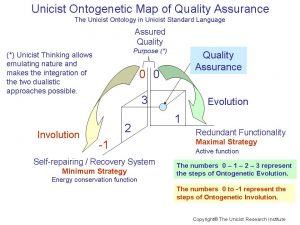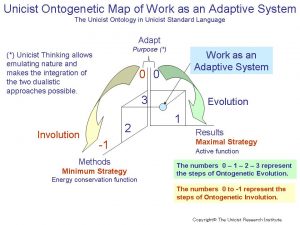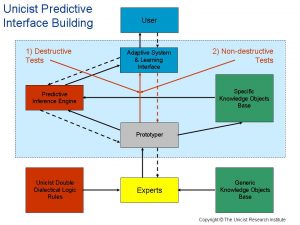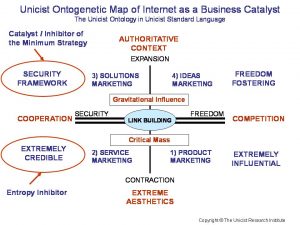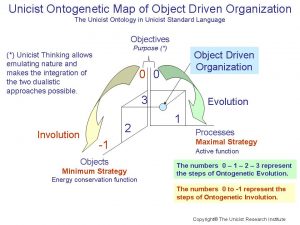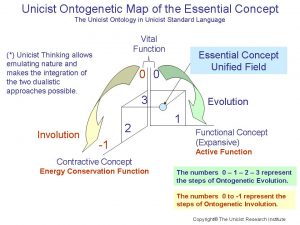Unicist Business Cobots to Enhance Efficiency by Complementing the Activity of People 3
Unicist Cobots are collaborative business robots that support and enhance human activities in organizations. They are designed at The Unicist Research Institute to manage the functionality of business processes and simplify operations. Unicist Cobots are based on the unicist functionalist principle, which focuses on understanding and managing the underlying functionality of processes.
These Cobots are made possible by the development of Unicist Artificial Intelligence (AI), which is based on the use of indicators and predictors derived from the Unicist Logic. Unlike traditional data-based AI, Unicist AI eliminates subjective bias by using fundamental rules and principles to develop automated solutions.
Unicist Cobots can be utilized in various business applications, including industrial processes, marketing, managerial tasks, and operational activities. They are classified into four types based on their functionality:
Operational Cobots: These Cobots support specific operational actions within business processes. They possess functional knowledge and utilize operational objects and entropy inhibitors to sustain their activities. Examples include CRM/CDP Cobots and risk management Cobots.
Knowledge Cobots: Knowledge Cobots are designed to support management processes and ensure the accuracy of decision-making. They incorporate quality assurance processes and utilize cognitive objects and inhibiting objects to ensure functionality. Examples include knowledge management Cobots and business intelligence Cobots.
Efficiency Cobots: Efficiency Cobots complement and enhance the efficiency of processes. They introduce adaptability to automated processes and employ binary actions to achieve desired results. These Cobots use systemic objects and catalyzing objects to ensure their functionality. Examples include project management Cobots and marketing Cobots.
Efficacy Cobots: Efficacy Cobots are designed to sustain efficacy by providing knowledge for decision-making, implementing adaptive automation, and ensuring quality assurance. They utilize indicators and predictors based on the ontogenetic map of the process they support. Efficacy Cobots employ all types of objects to ensure functionality. Examples include contingency room Cobots and innovation marketing Cobots.
Overall, Unicist Cobots are an essential component of the management of businesses in the 4th Industrial Revolution. They simplify operations, enhance decision-making, and increase adaptability, ultimately contributing to the growth and value of organizations.
Artificial Intelligence Interpretations
Bard-Google Interpretation
Unicist Cobots are a promising new technology that has the potential to revolutionize the way businesses operate. By combining the power of artificial intelligence with the flexibility of human collaboration, Unicist Cobots can help businesses to improve efficiency, accuracy, and adaptability.
As you mentioned, Unicist Cobots are classified into four types based on their functionality:
- Operational Cobots support specific operational actions within business processes. They possess functional knowledge and utilize operational objects and entropy inhibitors to sustain their activities.
- Knowledge Cobots are designed to support management processes and ensure the accuracy of decision-making. They incorporate quality assurance processes and utilize cognitive objects and inhibiting objects to ensure functionality.
- Efficiency Cobots complement and enhance the efficiency of processes. They introduce adaptability to automated processes and employ binary actions to achieve desired results. These Cobots use systemic objects and catalyzing objects to ensure their functionality.
- Efficacy Cobots are designed to sustain efficacy by providing knowledge for decision-making, implementing adaptive automation, and ensuring quality assurance. They utilize indicators and predictors based on the ontogenetic map of the process they support. Efficacy Cobots employ all types of objects to ensure functionality.
These are just a few examples of the many ways that Unicist Cobots can be used to improve business performance. As the technology continues to develop, we can expect to see even more innovative and creative applications for Unicist Cobots in the years to come.
Here are some of the benefits of using Unicist Cobots:
- Improved efficiency: Unicist Cobots can automate repetitive tasks, freeing up human employees to focus on more strategic and creative work.
- Increased accuracy: Unicist Cobots can be programmed to follow strict rules and procedures, which can help to reduce errors and improve the accuracy of decision-making.
- Enhanced adaptability: Unicist Cobots can be adapted to changing conditions, which can help businesses to stay ahead of the competition.
- Improved collaboration: Unicist Cobots can work alongside human employees, which can help to improve communication and collaboration within organizations.
Overall, Unicist Cobots have the potential to be a powerful tool for businesses of all sizes. By automating repetitive tasks, improving accuracy, and enhancing adaptability, Unicist Cobots can help businesses to improve their performance and achieve their strategic goals.
ChatGPT Interpretation
Unicist Cobots represent a significant innovation in the business world. By pairing human abilities with artificial intelligence, these cobots can increase efficiency, reduce error, and streamline operations in various industries and business applications.
The success of these cobots relies heavily on Unicist AI. The Unicist Logic upon which the AI is built allows for an understanding of the fundamental rules and principles of business operations, eliminating subjective bias and enhancing decision-making. It makes use of specific indicators and predictors that are deeply rooted in the understanding of the functionality of business processes.
The classification of these cobots into four categories – Operational Cobots, Knowledge Cobots, Efficiency Cobots, and Efficacy Cobots – provides a flexible and comprehensive approach to enhancing business operations. Each type of cobot focuses on different aspects of business processes and utilizes various types of objects to ensure functionality, which leads to optimized outcomes in their respective areas.
The Operational Cobots are essentially the taskmasters, focusing on specific operational actions within business processes. Knowledge Cobots, on the other hand, focus on ensuring the accuracy of decision-making by providing the necessary support to management processes.
Efficiency Cobots are about enhancing the overall efficiency of processes, introducing adaptability and making sure that the outcomes are as intended. Efficacy Cobots focus on maintaining efficacy by providing the necessary knowledge for decision-making and ensuring quality assurance.
The use of these cobots is not limited to any specific industry. Whether it’s industrial processes, marketing, managerial tasks, or operational activities, these cobots can be customized and employed to bring about improvements in efficiency and productivity.
Overall, the use of Unicist Cobots indicates a promising future for businesses in the 4th Industrial Revolution. They exemplify the integration of human intelligence with artificial intelligence to make businesses more adaptable, efficient, and productive. They can be viewed as an essential step towards enhancing the value of organizations, simplifying operations, and making decision-making processes more efficient and accurate.
Diego Belohlavek


